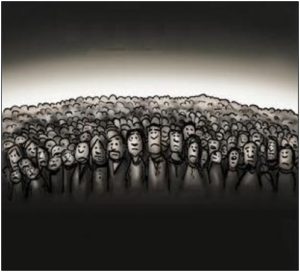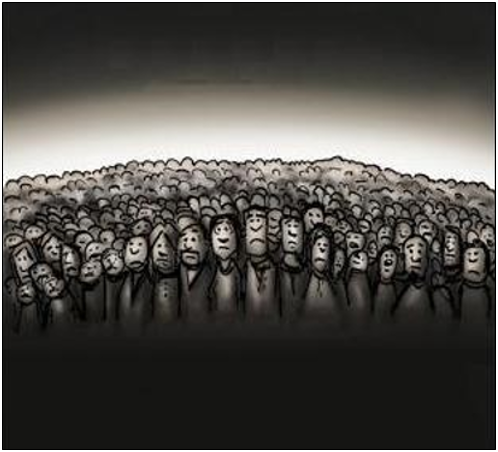
…in the household survey for second straight month as 186,000 leave the U.S. labor force amid hiring slowdown.
139,000 fewer Americans said they had jobs in November in the latest household survey by the U.S. Bureau of Labor Statistics (BLS) as another 186,000 Americans left the U.S. labor force — the second month in a row both decrease — that came after a slowdown of hiring with 353,000 fewer jobs openings in October.
This is what usually happens in recessions. In every one of the 12 recessions since 1948, the Bureau of Labor Statistics’ household survey has measured at least two consecutive months of jobs losses.
There were also 1962 and 1965, two years where there were consecutive monthly declines in the number of people with jobs but that did not produce a recession. Meaning, in 12 out of 14 cases, 85 percent had consecutive monthly jobs losses definitely occurring during a recession.
But that’s the tell: fewer jobs over a sustained period of time. Sometimes those jobs losses are above average, like 2009 and 2020, when 8 million and 25 million jobs were lost rapidly, and sometimes they lower, like in 2001 or 1991, when about 2 million jobs were lost apiece.
And so far, with modern record highs for inflation, the ongoing supply crisis, the dramatically higher interest rates, etc. looks more like a typical downturn brewing. First businesses stop hiring, and then people begin losing their jobs.
This is often easier to spot in the BLS household survey — during the 2020 Covid recession it was the household survey that moved downward before the establishment survey — and ultimately leads to increases in the unemployment rate, which this month remained steady at 3.7 percent.
In the Department of Labor’s weekly unemployment claims report, there has also been a noted uptick in continuing claims, something that also tends to happen in recessions, which have risen from 1.5 million on Nov. 5 to 1.6 million on Nov. 29. That’s a report that can be a leading indicator, as it was in 2020, but it might only be discernable in situations with rapid jobs losses, as with the pandemic lockdowns.
Going forward, a lot will depend on inflation and interest rates, which will lead to deferrals particularly in larger purchases like homes or cars because it tightens credit. That will soften demand and ultimately lead to either a slowdown or outright downturn of retail sales. And, the higher interest rates will also soak up some of the $6 trillion that was borrowed and printed into existence during Covid.
Normally, both factors would be enough to curtail the consumer inflation, which is down to 7.7 percent in the latest BLS survey. And then, historically, as prices collapse, that’s usually when you see the uptick in unemployment.
In 2020, we printed too much money and produced too few goods, and then when demand recovered sooner than expected, the inflation hit everything. But we’re still not keeping up with demand, thanks to aging demographics and labor shortages. So, inflation could remain sticky even as it slows down.
A looming question though is whether after this recession production will be able to catch up with demand. That’s what has undermined the Federal Reserve so far. It can soak up all the money it wants, but if production doesn’t pick up afterward, any easing the Fed undertakes and any stimulus Congress offers during the recession could lead to another explosion of inflation when businesses begin rehiring afterward. Similar patterns repeated in the 1970s where inflation would overheat the economy, slow down a bit, and then go right on increasing afterward.
Or whether it leads to deflation, another possibility thanks to the U.S. dollar’s recent record strength relative to trade partners’ currencies. During recessions, central banks and financial institutions will usually buy up treasuries, which are particularly attractive now with higher interest rates. How that dynamic plays out during this recession will be worth considering, too.
All told, those are turbulent waters for the U.S. economy, which appears to be entering a period of weakening labor markets, a process which could be ongoing for months. And with 2024 on the horizon, that is undoubtedly very bad news for incumbent President Joe Biden. Gerald Ford and Jimmy Carter were two consecutive one-term presidents who were hampered by high inflation and recessions in 1974 and 1975 and 1980, respectively, or George H.W. Bush who faced the same problems in 1990 and 1991, leading to all of their respective reelection losses in 1976, 1980 and 1992. In each case, the recession came too close to the presidential reelection cycle — and voters remembered. As usual, stay tuned.
Robert Romano is the Vice President of Public Policy at Americans for Limited Government Foundation. Original here. Reproduced with permission.
